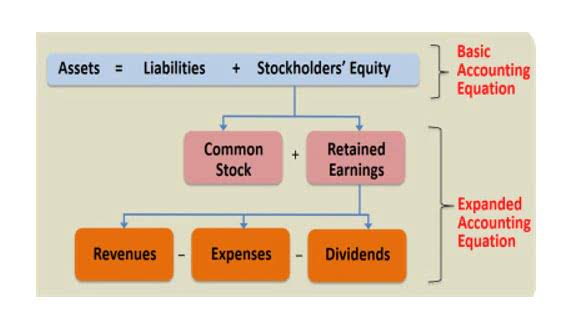Here are a few key differences between the adjusted trial balance and closing-trial balance. From the perspective of a CFO, the future holds a promise of real-time financial reporting, where the close process is no longer a discrete event but an ongoing activity. This shift will require a reevaluation of traditional roles and post closing trial balance example responsibilities within finance teams, as well as a reimagining of the tools and systems in place. Each of these adjustments plays a pivotal role in painting a true picture of a company’s financial status. They are not just numbers on a page; they are a narrative, a story told in the language of finance that informs decisions and strategies.
Adjusted trial balance
From the perspective of an auditor, a balanced trial balance is the first indicator of a well-maintained ledger. It suggests that the company has been diligent in its recording processes, potentially reducing the risk of errors or fraudulent activities. For investors and stakeholders, it is a sign of transparency and reliability, providing confidence in the financial statements derived from these balances. As you can see, the report has a heading that identifies petty cash the company, report name, and date that it was created. The accounts are listed on the left with the balances under the debit and credit columns. Bookkeepers typically scan the year-end trial balance for posting errors to ensure that the proper accounts were debited and credited while posting journal entries.
Identifying Discrepancies and Ensuring Balanced Accounts
As you can see, the accounts are generally listed in balance sheet order starting with the assets followed by the liabilities and then equity accounts. If these two don’t equal, there is either a problem with closing entries or the adjusted trial balance. The purpose of a https://www.bookstime.com/articles/bookkeeping-for-therapists post-closing trial balance is to ensure that all the individual account balances match in the debit and credit columns. This report is used to identify any errors that may have been made while posting the closing entries.
- Before closing the accounting period, double-check these areas to make sure you’ve included all the necessary adjusting entries.
- Next will be a listing of all of the general ledger balance sheet accounts (except those with $0.00 balances) along with each account’s balance appearing in the appropriate debit or credit column.
- Closing entries transfer the balances of these temporary accounts to retained earnings, resetting their balances to zero for the new accounting period.
- Founded in 2017, Acgile has evolved into a trusted partner, offering end-to-end accounting and bookkeeping solutions to thriving businesses worldwide.
Step-by-Step Guide to Preparing a Post-Closing Trial Balance
Once all transactions have been recorded and posted to the ledger, you will prepare the unadjusted trial balance as the first trial balance for the accounting period. Prior to making any month-end adjustments, its main objective is to determine whether the company’s debits and credits are equal. Once you’ve entered all of the debits and credits, make sure they all match. You might need to add some missed debits or credits, or you might find that you did something else wrong. A trial balance sheet includes a list of general ledger accounts along with their ending debit or credit balances.
- This type of error can only be found by going through the trial balance sheet account by account.
- Not all accounts in the chart of accounts are included on the TB, however.
- Hence, you will not see any nominal account in the post-closing trial balance.
- Closing entries are essential for getting the general ledger ready for the new accounting period.
- Advanced software solutions are expected to handle the bulk of transaction matching and anomaly detection, freeing up professionals to focus on analysis and strategic decision-making.
- It’s a crucial bridge between accounting periods, ensuring continuity and accuracy in financial reporting.
Other types of trial balances
The post-closing trial balance is a crucial component in the accounting cycle, representing the final step before the books are reset for the new accounting period. This step ensures that all temporary accounts have been closed out and that only permanent accounts, such as assets, liabilities, and equity, remain on the ledger. By doing so, it provides a clear snapshot of the company’s financial position at the end of the period. In summary, the post-closing trial balance is not just a formality; it’s a crucial step in the accounting cycle that affects various stakeholders differently.
- Thus, the adjusted trial balance is a process to prepare accurate ledger account balances for an accounting cycle.
- Thus, you must treat the amount spent on any addition made to the land and building as a capital expenditure.
- Good accounting keeps a business financially solid and ready for the future.
- Thus, to check if the debit or credit amounts you record in the ledger are accurate, you need to prepare the trial balance.
- This process is vital for maintaining accurate financial records and providing a clear picture of a company’s financial position.
CFOs and groups like the FASB depend on them to make big financial choices about profits and earnings. Then the accountant’s job is to determine whether there is a zero net balance, i.e., all debit balances equal all credit balances. Then the accountant raises a flag to ensure that no further transactions are recorded for the old accounting period. Hence, any additional transactions are recorded for the next accounting period.
- The other two are the unadjusted and adjusted trial balances, both of which are prepared before the temporary accounts are closed out.
- This measures the credits and debits of your remaining accounts that have a balance and checks to see if they still balance, which is one of the core principles of double-entry accounting.
- Remember, your general ledger accounts are recorded in the following order in your trial balance sheet.
- In other words, accounting errors occur when your trial balance sheet does not tally.
- With the preparation of the post-closing trial balance, the accounting cycle for an accounting period comes to an end.
- The post-closing trial balance is an essential step in the accounting cycle, serving as the final checkpoint before the books are considered closed for the period.
- Remember that closing entries are only used in systems using actual bound books made of paper.
For instance, you may debit a correct balance in an incorrect account while passing a journal entry. Therefore, Trial Balance is an important accounting statement as it showcases the final status of each of your ledger accounts at the end of the financial year. These final balances help you to prepare final accounts like the Profit and Loss Statement and Balance Sheet. In the next accounting period, the accounting cycle will be repeated again starting from the preparation of journal entries i.e. the first step of accounting cycle.







